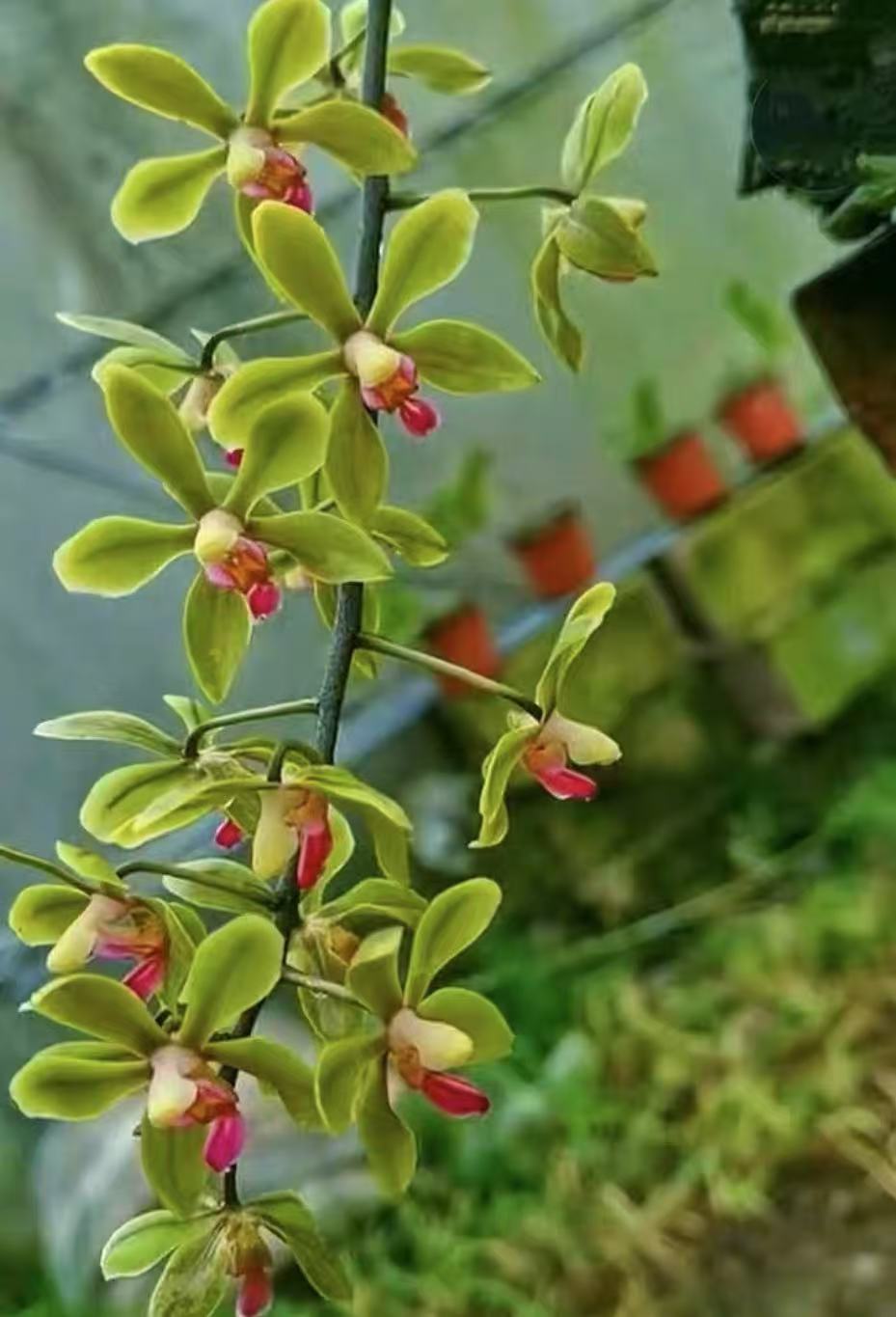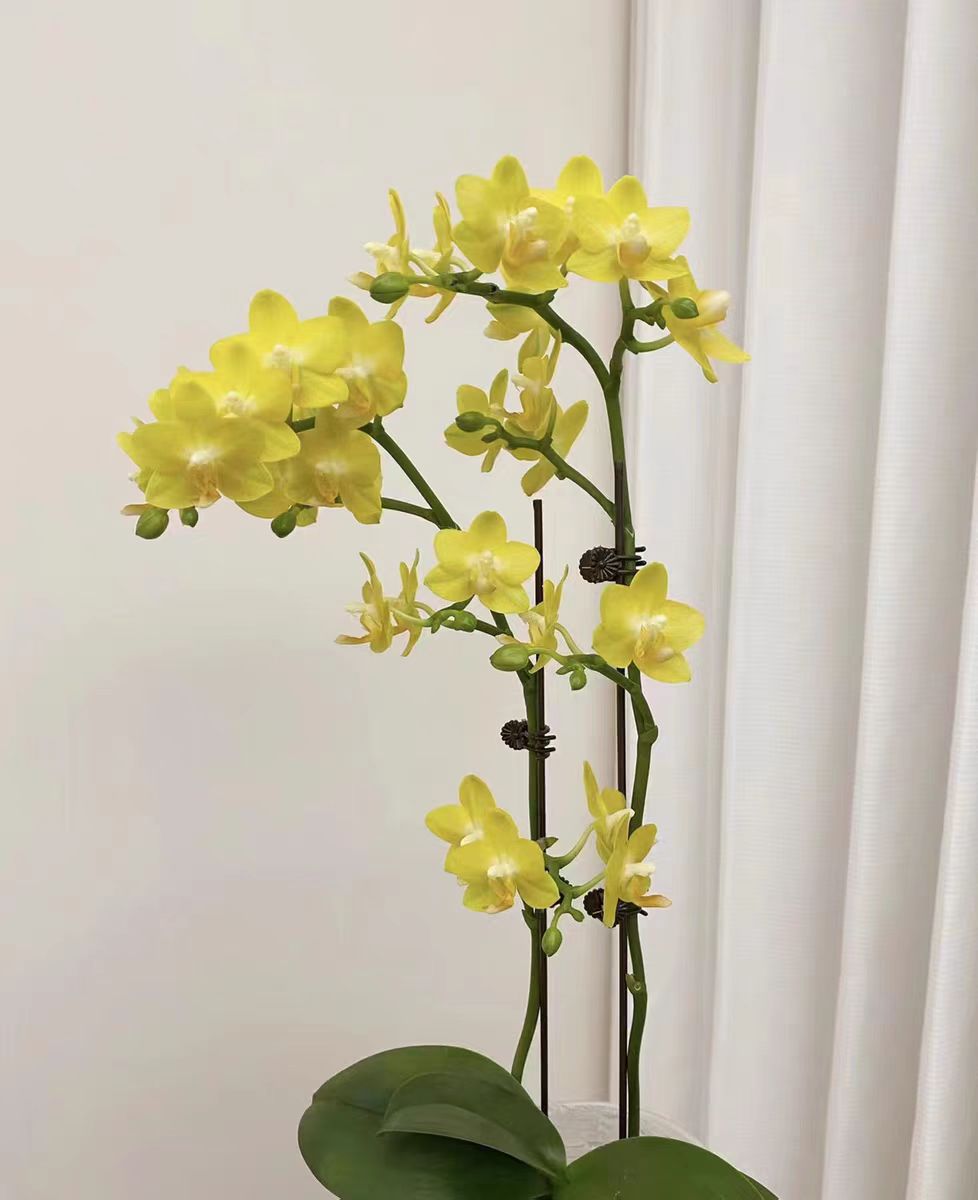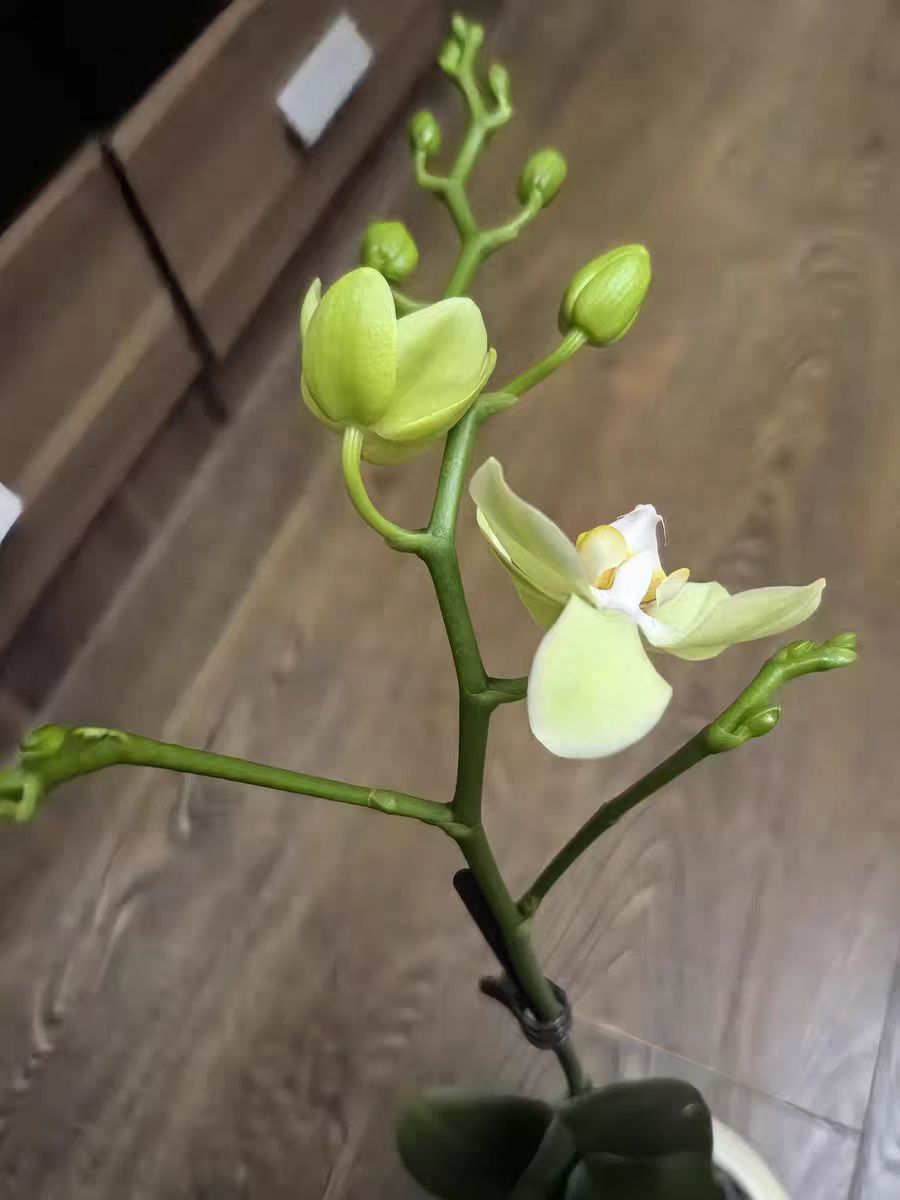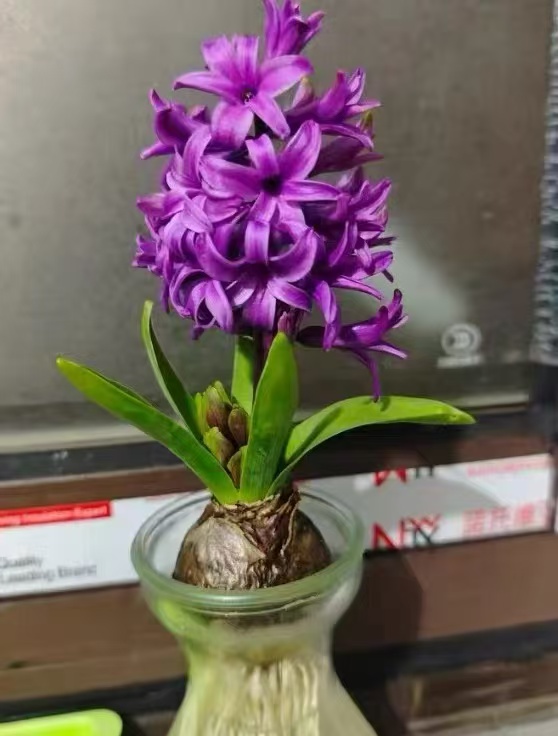Phalaenopsis, a gem in the Orchidaceae family, is deeply loved by people for its unique flower postures and rich colors. Among the numerous varieties of Phalaenopsis, Phalaenopsis stobartiana and Phalaenopsis wilsonii are particularly eye - catching. This article will introduce in detail the differences between these two types of Phalaenopsis, with a focus on the characteristics of Phalaenopsis stobartiana.
The flower color of Phalaenopsis stobartiana is brown - green, quiet and elegant, similar to the leaf color. The bright red - purple of the mid - lobe of its lip forms a sharp contrast with the overall flower color, making the flower stand out among the greenery and attracting pollinators. This structure with a distinct contrast is the wonder of Phalaenopsis stobartiana.
Phalaenopsis stobartiana is a rare germplasm resource of Phalaenopsis in China and is of great significance for maintaining biodiversity. However, due to severe illegal collection, the number of its wild plants has dropped sharply. Therefore, effective protective measures should be taken to prevent the further deterioration of the survival status of its natural population.
Phalaenopsis stobartiana is loved by people for its unique flower postures and colors. It has a relatively long flowering period, and its flower color is beautiful and unique, with high ornamental value. Whether it is potted or cultivated on tree trunks or rocks, it can show its unique charm.
Differences between Phalaenopsis stobartiana and Phalaenopsis wilsonii:
Morphological characteristics
• Phalaenopsis stobartiana: The stem is very short, usually with 3 - 4 leaves. The leaves are ovate - lanceolate, obliquely oblong or elliptic, 7 - 11 cm long and 3 - 3.4 cm wide. The apex is obtuse and slightly hooked on one side. The base is slightly constricted and then expanded into a leaf - sheathing sheath. The leaves often wither in the dry season, and the plant has leaves during the flowering period. The inflorescence is lateral at the base of the stem, often oblique, unbranched, and sparsely bearing 2 - 4 flowers. The flower color is brown - green. The dorsal sepal is oblong - elliptic, the lateral sepals are slightly oblique ovate - elliptic, the petals are elliptic - obovate. The lip has a claw about 1 mm long at the base, is 3 - lobed. The upper half of the lateral lobes is light purple, and the lower half is yellow. The mid - lobe is dark purple.
• Phalaenopsis wilsonii: The stem is covered by leaf sheaths. The leaves are slightly fleshy, both sides are green or the back is purple - red when young. They are oblong or nearly elliptic, 6.5 - 8 cm long and 2.6 - 3 cm wide. The apex is obtuse. The leaves fall in the dry season, and there are no leaves or only small leaves during flowering. The inflorescence emerges from the base of the stem. The peduncle is dark purple. The petals are spatulate or elliptic - obovate. The upper half of the lateral lobes is purple, and the lower half is yellow. The capsule is long and narrow. The flowering period is from April to July.
Growth habits
• Phalaenopsis stobartiana: It grows on the trunks of mountain forests at an altitude of 1350 meters, distributed in western Yunnan (Yingjiang) of China and Myanmar. It prefers a humid and semi - sunny environment, and has a relatively high suitable growth temperature.
• Phalaenopsis wilsonii: It is native to Guangxi, Guizhou, Sichuan, Yunnan, and Tibet in China. It mostly grows on the trunks of mountain forests with sparse trees at an altitude of 800 - 2150 meters or on the shady and wet rocks under the forest. It prefers a humid and semi - sunny environment, and the suitable growth temperature is 18℃ - 26℃.
Conservation status
• Phalaenopsis stobartiana: It is naturally distributed in Myanmar and Dehong Prefecture of Yunnan Province in China. Its distribution area is narrow, and the number of wild plants is relatively small. In recent years, due to the degradation of the natural habitat and human collection for ornamental purposes, the wild population of Phalaenopsis stobartiana has dropped sharply, and it is now in an endangered state. In the latest version of the "List of National Key Protected Wild Plants (Second Batch)" (discussion draft), Phalaenopsis stobartiana is listed as a national first - class protected plant.
• Phalaenopsis wilsonii: It is classified as Vulnerable (VU) in the "IUCN Red List of Threatened Species" and also needs protection.
There are significant differences between Phalaenopsis stobartiana and Phalaenopsis wilsonii in terms of morphological characteristics, growth habits, and conservation status. Phalaenopsis stobartiana attracts much attention for its unique flower color and rarity. We should strengthen the protection and research of Phalaenopsis stobartiana to jointly maintain the survival and development of this rare species.
What are the differences between Phalaenopsis stobartiana and Phalaenopsis wilsonii?

Share with
Tagged in :




Leave a Reply